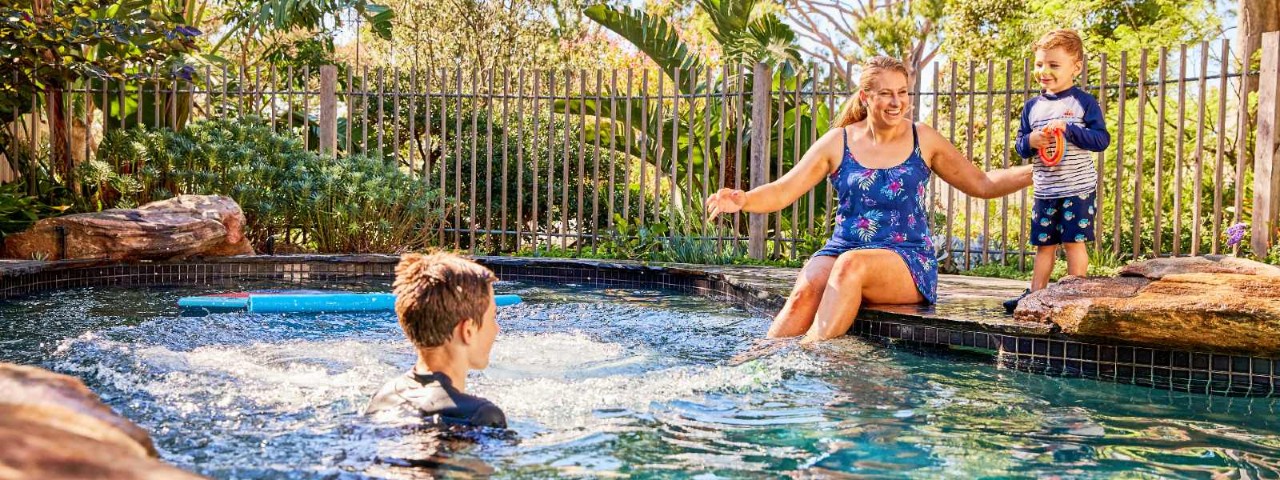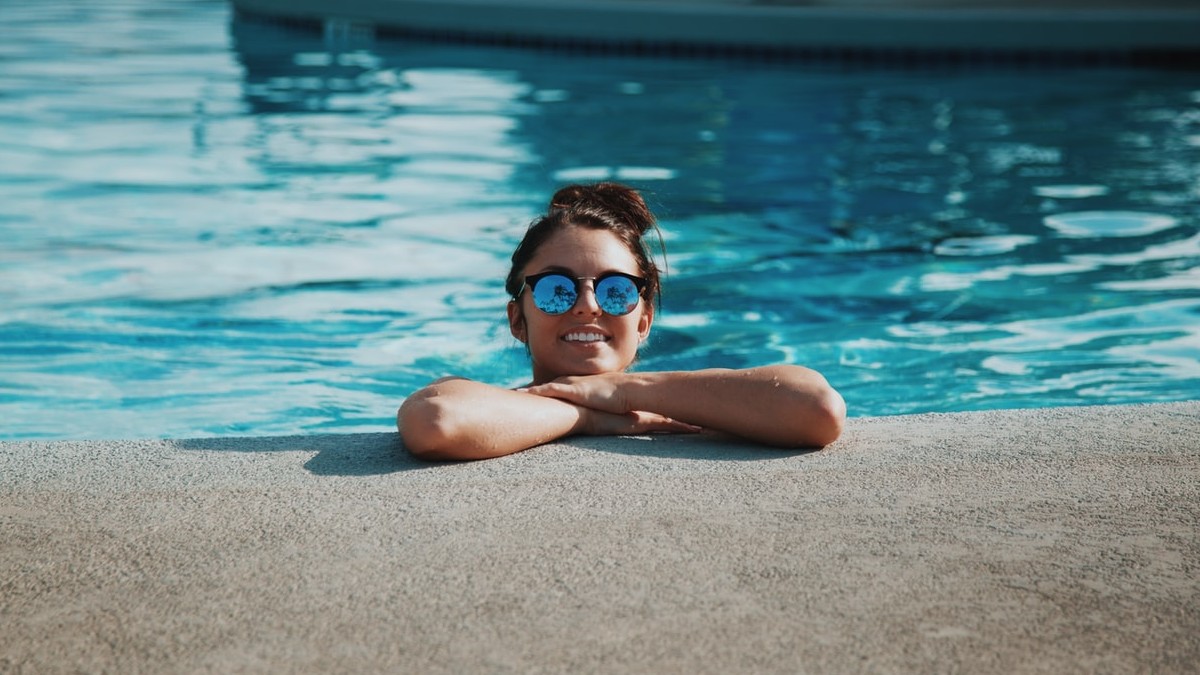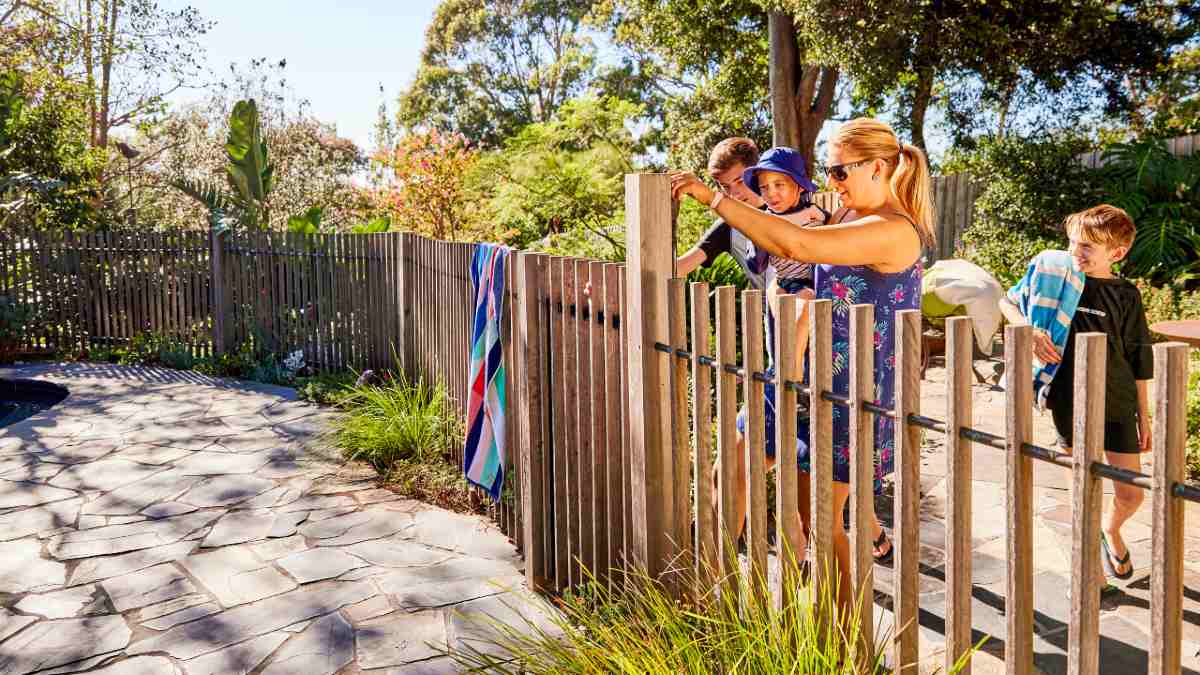The deadline for Victorians to have their pools inspected and registered with a compliance certificate has been extended.
Swimming pool safety tips to keep the whole family safe

Everyone loves a dip in the pool, but it’s important you know how to keep your kids safe when going for a swim this summer.
Jumping in the pool – whether at home or at the local aquatic centre – is one of the best ways to cool off on a hot summer’s day.
However, if you’re taking the family for a dip, it’s important you know how to keep everyone safe.
Data from the Royal Lifesaving Society of Australia (RLSSA) shows that the youngest members of your family are also the most at-risk when it comes to pools.
Drowning is one of the primary causes of death for Australian children aged one to three years old, with 549 children aged zero to four years drowning in Australia over the past 10 years. Backyard swimming pools are the leading location for drownings in young children, accounting for 51 per cent of incidents.
Do you know what steps you need to take to ensure your family can swim safely this season?

Adults should always supervise children in the pool - don't let older kids do the job. Image: Getty
How to keep kids safe around water
We all know that small children are curious creatures. Unfortunately, this curiosity makes unsupervised time around water extremely dangerous.
It doesn’t even have to be a large body of water – while pools are the most common location for drownings in young children, just a few centimetres can prove deadly.
The RLSSA’s Keep Watch program comprises four simple steps to ensure small children stay safe while having fun around water.
Supervise
The RLSSA notes that 100 per cent of fatal drownings are the result of a lack of or lapse in adult supervision.
Monitoring children around water is the single most important thing you can do to keep them safe. That means staying within arms reach and keeping eyes on the kids in and around water at all times. Entrust supervision to adults only, don’t delegate it to older kids.
It can take as little as 20 seconds for a child to drown (and is often silent) so make sure there’s another adult on watch if you need to go to the bathroom, get a drink or leave the pool for any reason. If there isn’t, take the child with you.
Restrict
In Victoria, any pool that can contain water 30cm or deeper (including indoor pools, spas, wading pools and above-ground pools) must have a compliant safety barrier with self-closing and self-latching gates.
Many pools must also be registered with their local council.
Teach
Water safety has been part of the Victorian education curriculum since 2017 but you can begin teaching them about water safety well before they start school.
Water familiarisation classes that teach basic water safety and education are run for children as young as six months. Even a child that is a known swimmer can drown so never leave kids unsupervised even if you believe them confident in water.
Respond
If a child goes missing, check all water locations inside and outside your home before checking anywhere else.
In the case of emergency, call Triple Zero (000) and know how to perform CPR – you can find your nearest CPR course via the RLSSA website. Performing CPR can start or maintain breathing and circulation until an ambulance arrives.

It's mandatory for pools in Victoria to have a compliant safety fence. Photo: Matt Harvey
Top 10 tips for pool safety
Follow these simple tips to help ensure your whole family stays safe around swimming pools this summer.
- Children under ten should be actively supervised by a parent/guardian and always be in your sight, and children under five should be within arm’s reach.
- Ensure your pool/spa fence is compliant, well maintained and registered with your local council.
- Never leave pool gates propped open and remove objects from the pool area and surrounds that a child can use to climb on and over a pool fence.
- Always empty inflatable pools and paddling pools immediately after use.
- In rural areas use a child-safe play area to restrict a child’s access to water bodies such as dams that cannot be fenced.
- Enroll your children in swimming lessons to ensure they learn swimming and water-safety skills.
- Learn CPR and know what to do in an emergency. Non-swimmers and weak swimmers of any age should not swim alone and should stay in shallow water.
- Learn to swim if you haven’t already. Adult swim classes are run around Australia and can greatly improve quality of life as well as your ability to supervise children around water.
- While floating toys and pool noodles are fun, they shouldn't be relied upon. As toddlers, in particular, are top-heavy, devices such as inflatable rings result in flipping and trapping the child underwater. Remember that these devices are toys, not safety equipment.
- Be sun-smart. Bodies of water can reflect and mirror the hot sun and amplify its heat – even if you cant feel it in the cool water. Apply sunscreen regularly and keep hydrated.


